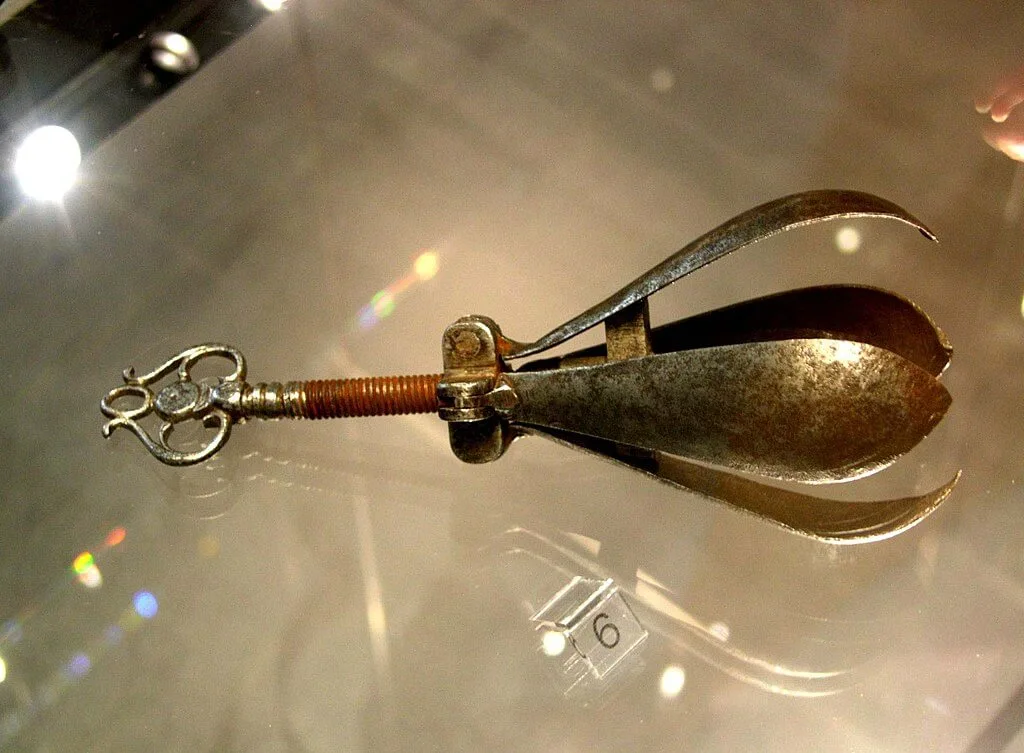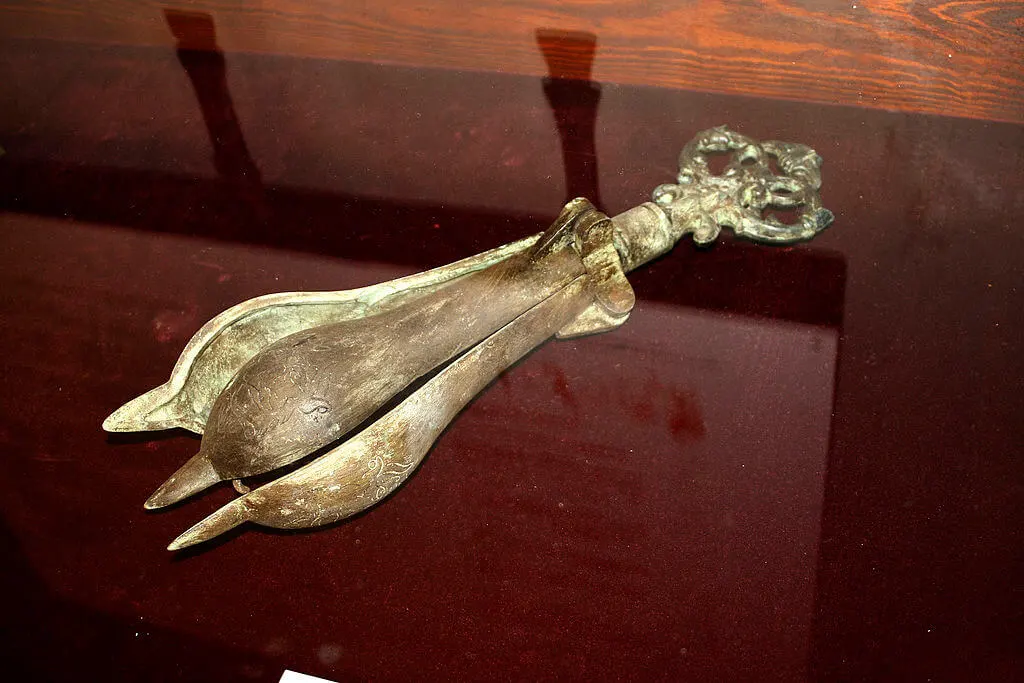Throughout the medieval era, a diverse array of torture devices found use. Among them, the pear of anguish, also dubbed the choke pear or mouth pear, stands out for its capacity to inflict excruciating agony upon those subjected to it. For millennia, human creativity has been employed to devise new and terrifying methods of causing pain. Yet, in the realm of torture, the lines between reality and imagination can blur. Despite the presence of early prototypes, conclusive evidence confirming the pear of anguish’s actual use as a torture instrument remains elusive.

How Did The Pear of Anguish Work?
The Pear of Anguish, a medieval torture instrument primarily used on women during that era, was employed by inserting it into various bodily orifices. These included the mouth, lady bits, or any available opening while in its closed state.
Equipped with a screw mechanism, the device enabled gradual expansion of the pear’s wings, effectively increasing its size. This resulted in intense internal pressure within the body. The instrument featured pointed prongs, well-suited for tearing into the throat, cervix, or intestines of the victim, often leading to fatal consequences.
Pear of Anguish in History
The historical record of the “Pear of Anguish” is veiled in uncertainty due to the lack of firsthand accounts of its use. Although some surviving devices suggest a production date in the early modern period around 1600, no solid evidence exists.
The first mention of the deviceappears in F. de Calvi’s L’Inventaire général de l’histoire des larrons (“General inventory of the history of thieves”) in 1639, attributing its invention to a thief named Capitaine Gaucherou de Palioly during Henry of Navarre’s era. Palioly purportedly employed a mechanical gag to subdue a Parisian victim while his accomplices looted the victim’s home.
Subsequent references emerged in the 19th century, including Grose’s Dictionary of the Vulgar Tongue (1811), describing “Choke Pears” as aids for extortion, potentially used in Holland. Eldridge and Watts’ book (1897) discusses the device, casting doubt on Palioly’s Pear’s existence, yet acknowledging the use of pear-shaped gags in past robberies.
Brewer’s Dictionary of Phrase and Fable (1898) reports that robbers in Holland once used an iron pear-shaped object forced into victims’ mouths. Turning key activated springs that released iron points, making removal without the key impossible.
Chris Bishop of the Australian National University asserts that the construction of the oldest devices suggests they sprung open and closed, contrasting the traditional screw mechanism. Bishop questions the authenticity of many devices and proposes that the rise of the “Pear of Anguish” as a medieval torture device stemmed from a misidentification of an ornate pear-like object donated to the Louvre in 1856. Ultimately, the true origins and purpose of the “Pear of Anguish” remain a mystery.
What Was The Pear of Anguish Used For?
According to writings from the same era, if the pear of anguish had any usage, it was actually inserted at the opposite end of the body. Historical sources of the time, when mentioning it at all, usually refer to it as the “choke pear,” and it didn’t function as a conventional torture tool. Some scholars have raised doubts about the credibility of historical references to the pear, deeming them strangely implausible.

The Pear of Anguish torture apparatus primarily targeted women accused of witchcraft, aiming to elicit confessions. This device is believed to have found extensive use during the Spanish Inquisition. Its mechanism inflicted substantial pain, swiftly compelling women to confess to witchcraft or other alleged crimes. Typically crafted from hard materials, possibly iron, the Pear of Anguish was a medieval torture tool used for this purpose.
While a few instances from the early modern period exist, some with spring-loaded openings, the detachable key wasn’t meant to unseal the mechanism, but rather to secure it. The device could have been used to prevent robbery victims from seeking help. Inserted into the mouth and then expanded, it rendered the victim incapable of removing it without the key, thereby obstructing their ability to summon the authorities. This tactic also forced victims into paying off the criminals to obtain the key.
Summary
The Pear of Anguish, a controversial medieval torture device, remains shrouded in uncertainty. Amid an array of torment tools, the pear, also known as the choke pear or mouth pear, garnered infamy for its capacity to induce excruciating pain. Despite early prototypes, its historical use as a torture instrument remains unproven. While some devices suggest a 1600s origin, references to it are scarce.
The first mention attributes its creation to Capitaine Gaucherou de Palioly in 1639. Subsequent references in the 19th century are met with skepticism. Chris Bishop questions the device’s authenticity, suggesting its notoriety stems from misidentifications. The pear’s purpose, possibly inserted at the opposite end of the body, targeting accused witches during the Spanish Inquisition, underscores its elusive nature.
Also Read: Thumbscrew Torture Device: What Is It and How Does it Work?
